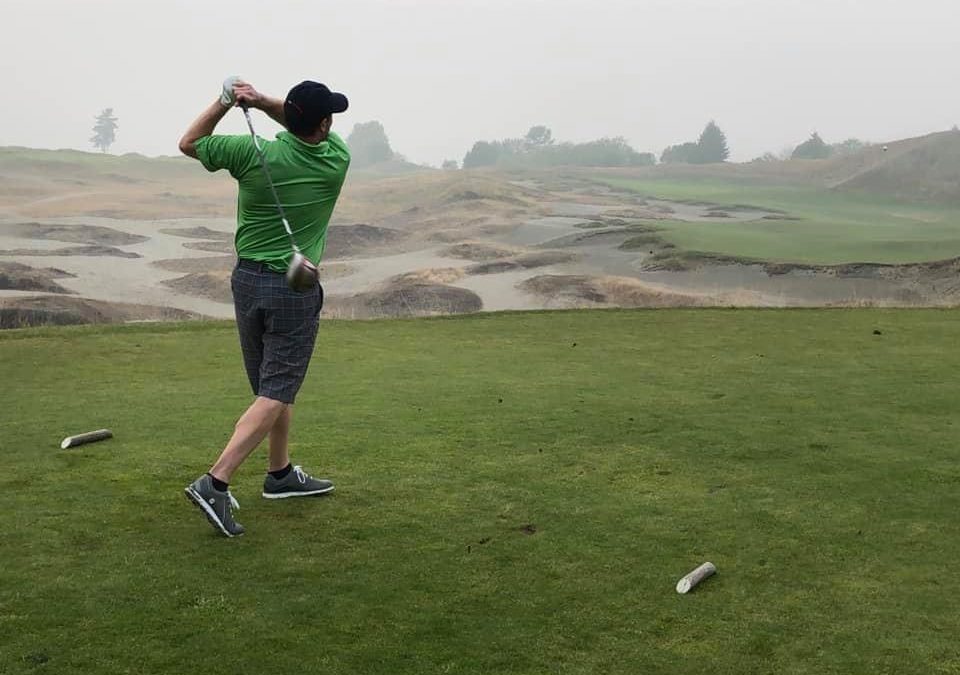I marked down a double bogey 6 on the 4th hole at Gold Mountain last Friday.
I hate double bogeys. They are just killers to your score and mindset.
At first glance, I might have blamed the 3-putt for the poor score. But that would have been a mistake.
Whenever sh*t happens, recency bias can become an obstacle to understanding what happened. We need to deconstruct the calamity from the green back to the tee.
My final putt from four feet was perfectly struck. It lipped out – meaning it caught the edge of the hole and after cruelly circling it, decided to stay out.
It was exactly how I intended to putt it. The previous putt put me in the unenviable situation by going long.
That first putt was about a 35-footer, though. No bargain from that distance. I had that long of a putt because I hit a sand wedge shorter than I should have. The shot was okay, just not aggressive enough.
I was hitting my third shot from there because I had to chip out of the trees. My drive was hit left and put me in a bad spot.
Bottom line, the score was a result of the combination of a wayward drive and a tentative sand wedge. While it would have been easy to blame my putting, it really wasn’t the proximate cause of the execution. By deconstructing the calamity, I learned that the bad score started with a poor tee shot.
You must go through the same deconstruction of the sh*t that happens in your business. As a risk manager, you can’t get caught up in recency bias.
Let’s look at an example involving an employee accident on a job site…
An employee falls from a ladder and is severely injured.
Recency bias might suggest that the employee was at fault for not adhering to the safety standards of using the ladder.
Let’s start at the green and move back to the tee.
Why was the employee using it incorrectly? Reckless overconfidence? Poor training? Apathetic supervision? What about a questionable hire to begin with?
If a risk manager simply stops at the most recent “cause” of a calamity, then they will never be able to spot trends, find solutions, and make changes.
If I’m more consistently hitting fairways off the tee, the likelihood of me putting for par from less than 4 feet, rather than trying to save bogey from further, will increase.
Likewise, if you can deconstruct even the smallest of negative events, then you will be in a better position to prevent them from ever happening in the first place.
And that’s a birdie in my book.
Download my new book: Back 9 Walking: A Guide to Living Life Unleashed
Need help with risk and resilience strategy? Contact me at [email protected] for a complimentary 15-minute discovery meeting.
© 2022 Emerging Risk Solutions. All Rights Reserved


